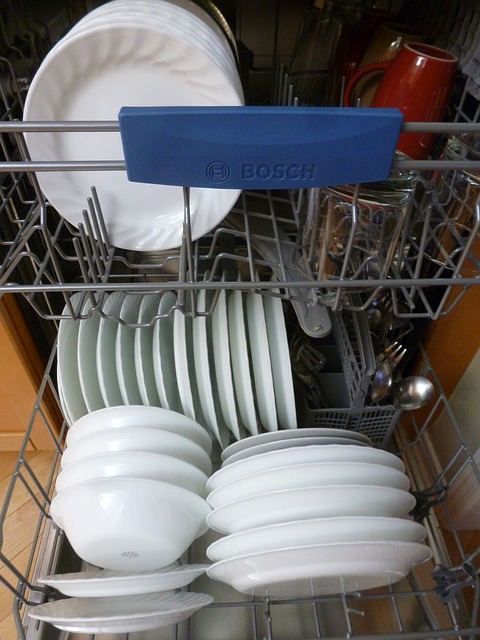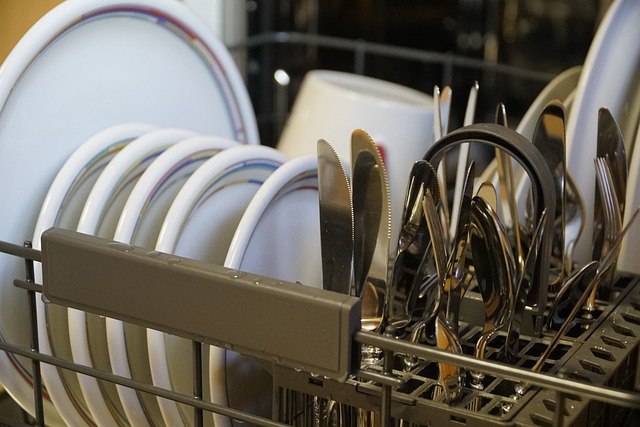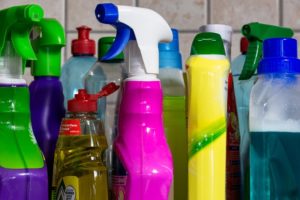Automatic Dishwashers and Residual Contaminants on Dishes and Silverware

Automatic dishwashers are supposed to clean plates and silverware, leaving them ready for reuse. Unfortunately, many dishwasher detergents and drying agents include toxic chemicals, some of which don’t get fully removed by the end of the wash cycle. Understanding if the residual chemicals from automatic dishwashers pose a risk has not been well studied, yet the data available raises some concerns.
A recent study looked at intestinal cellular effects of chemicals found in dishwasher detergents and rinse aids (Ogulur 2023). Based on a standard dishwasher rinse cycle, estimates suggest that detergents are diluted to about one part in 500 during the final rinse. For rinse aids, the dilution factor is even further, between one part in 2000 to one part in 10,000. The water that remains on the dishes and silverware will then dry with small amounts of residual detergent and rinse aid chemicals being left upon eating surfaces.
Ethoxylated Alcohols May Pose Risks to the Intestinal Tract
Based on an estimated best case scenario, the researchers tested the effects of different dishwasher chemicals at a one to 10,000 dilution. Notably, ethoxylated alcohols were shown to cause toxicity to intestinal cells at a level that could inflame or damage the lining of the digestive tract. Ethoxylated alcohols are used as surfactants to help with cleaning.
To further evaluate the risks of detergents and rinse aids, the researchers then explored a more real world situation. Cups were washed in a dishwasher and the residue left on the cups was extracted. To extract the residue, the cups were filled with cell culture media, shaken and allowed to stand for five minutes before exposure to digestive tract cell cultures. The dishwasher residual extracts were used in different dilutions and the effects on intestinal cells were analyzed.
Cellular toxicity occurred up to a one in ten dilution of the residual cleaning agents. At higher concentrations, intestinal barrier function of the cells was severely damaged. A second trial with a different brand of dishwasher detergent did not induce cellular toxicity. The findings raise obvious concerns for individuals who are eating off of tableware that has been washed in an automatic dishwasher based on the detergent and rinse aid’s ingredients.
Avoiding Ethoxylated Alcohols in Dishwasher Detergents
When using an automatic dishwasher it is likely best to avoid rinse aids and use detergents that do not contain ethoxylated alcohols. General names for ethoxylated alcohols include:

- Alkoxylated alcohols
- Oxyethylated alcohols
- Polyglycol ethers
- PEG-alkyl ethers
- Ethoxylated alcohols
- Alcohol ethoxylates
- Polyethylene glycol ethers
- Poly(oxyethylene) alkyl ethers
- Nonionic surfactants
Specific names for ethoxylated alcohols also include the following compounds followed by a number that indicates the average ethylene oxide units per molecule:
- Laureth-#: For example, Laureth-4
- Ceteth-#: For example, Ceteth-20
- Steareth-#: For example, Steareth-21
- Oleth-#: For example, Oleth-10
- Tergitol NP-#: For example Tergitol NP-9
If you have to use dishwasher detergent that contains ethoxylated alcohols, rinsing the dishes in warm water before use will likely remove most of the residue.
Final Thoughts
It’s worth noting that the findings on the toxicity of dishwasher residue is based on a single study published in 2023. More studies are needed to corroborate the findings, especially on ethoxylated alcohols and their toxicity to the cells lining the intestinal tract. All that being said, I know from personal experience that I can smell the residue on glasses washed in an automatic dishwasher. Even so, the smell is easily removed through rinsing with warm water.



